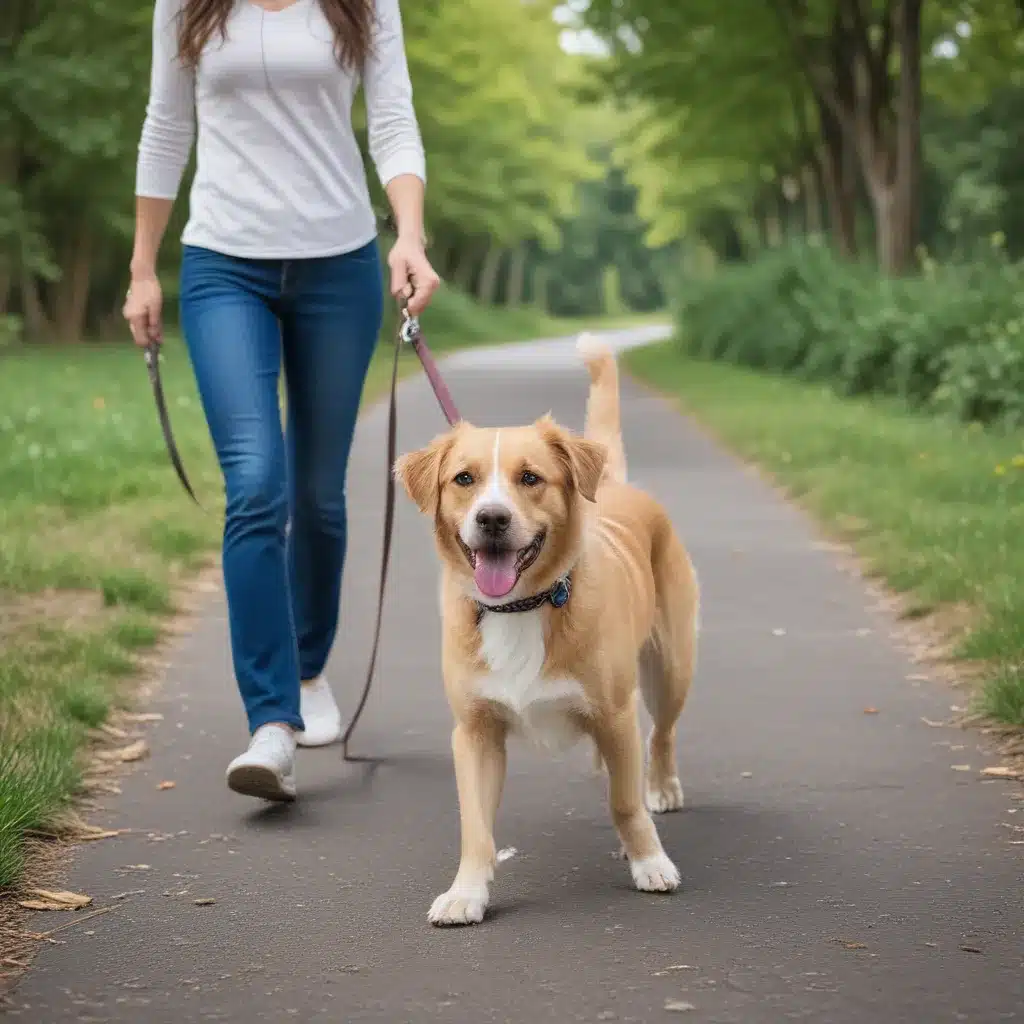
The Struggle Is Real
Ah, the joys of dog ownership. The unconditional love, the playful cuddles, the… constant tug-of-war as your pup drags you down the street? Yep, if you’re one of the many dog parents dealing with a less-than-stellar walking companion, you know the struggle is all too real.
I’m right there with you, my friend. When I first brought home my 90-pound retriever, I had visions of peaceful strolls through the neighborhood, not frantic sprints to keep up with his relentless pace. But sure enough, every walk turned into an arm-wrenching, knees-scraping ordeal as he forged ahead, determined to sniff every tree, chase every squirrel, and leave no fire hydrant unvisited.
Why Do Dogs Pull?
It’s easy to get frustrated with our canine counterparts, but let’s try to cut them some slack. After all, walking the way we humans do is completely unnatural for dogs. In their minds, they’re thinking, “Why the heck are we moving so slowly? Let’s run!” And with noses that are hundreds of times more sensitive than ours, every scent along the way is like a siren call, luring them off in every direction.
Imagine if you were walking down the street and saw hundreds of $100 bills scattered everywhere. Would you just stroll past them, or would you dart around, frantically trying to scoop them all up? For our four-legged friends, that’s essentially what a walk is like – an obstacle course of amazing smells and fascinating sights, just begging to be explored.
So while the constant pulling may drive us bonkers, it’s important to remember that it’s not our dogs being stubborn or disobedient. It’s simply their natural instincts kicking in, and we have to find a way to channel that energy into a more polite walking experience.
Tackling Leash Pulling: Techniques to Try
Luckily, there are plenty of effective strategies we can use to teach our canine companions to walk nicely on a leash. It may take some trial and error to figure out what works best for your pup, but with patience and consistency, you’ll be strolling side-by-side in no time.
The Stop and Go
One of the simplest techniques is the good old “stop and go.” Whenever your dog starts to pull, just stop in your tracks and wait for the leash to go slack. As soon as it does, start walking again. Repeat this process every time they start to forge ahead, and they’ll quickly learn that pulling gets them nowhere, but walking calmly next to you keeps the adventure going.
The Leash Correction
Another option is the leash correction method. When you feel the leash tightening, give a gentle but firm upward tug, then immediately release the tension. This repositions your dog from a forward-leaning stance to a neutral one, and the quick release teaches them that pulling isn’t going to get them what they want. Just be sure to keep your pup close to your side for this technique, as the farther ahead they are, the more strength you’ll need to correct them.
The Switchback
For the more active and easily distracted dogs out there, the switchback technique can be a game-changer. Whenever your pup starts to pull, simply turn 180 degrees and head in the opposite direction. As they catch up to you, if they try to pull again, switch directions once more. This keeps them guessing and focused on you, rather than whatever shiny object has caught their eye.
Reward-Based Training
And of course, no discussion of loose leash walking would be complete without some good old-fashioned reward-based training. Try letting your dog get a bit ahead of you, then call them back to your side, rewarding with a tasty treat when they reach you. Over time, they’ll learn that coming back to you means good things happen, and they’ll be less inclined to forge ahead.
The Right Tools for the Job
In addition to these training techniques, there are also a variety of equipment options that can lend a helping hand. One of my favorites is the front-clipping harness, which attaches at the chest rather than the back. This “self-correcting” design gently turns your dog back towards you whenever they start to pull.
Other useful tools include head halters, no-pull leashes, and martingale collars. Just keep in mind that these should only be used as training aids, not permanent crutches. The goal is to eventually be able to walk your pup with just a regular leash and collar.
Practice Makes Perfect
Ultimately, teaching loose leash walking is a process, and it’s going to take time and consistency. Some dogs pick it up faster than others, but with patience and the right techniques, you’ll get there. And along the way, don’t forget to make it fun! Incorporate trick training, explore new routes, and keep those treats handy. Before you know it, you and your furry friend will be strolling side-by-side, taking in the sights and smells together.
And if you’re ever feeling discouraged, just remember – you’re not alone in this struggle. Heck, even the team over at ihavedogs.com has dealt with their fair share of leash-pulling pups. But with the right approach, you can transform that drag into a delightful daily stroll. So keep at it, my friend, and enjoy the journey!

